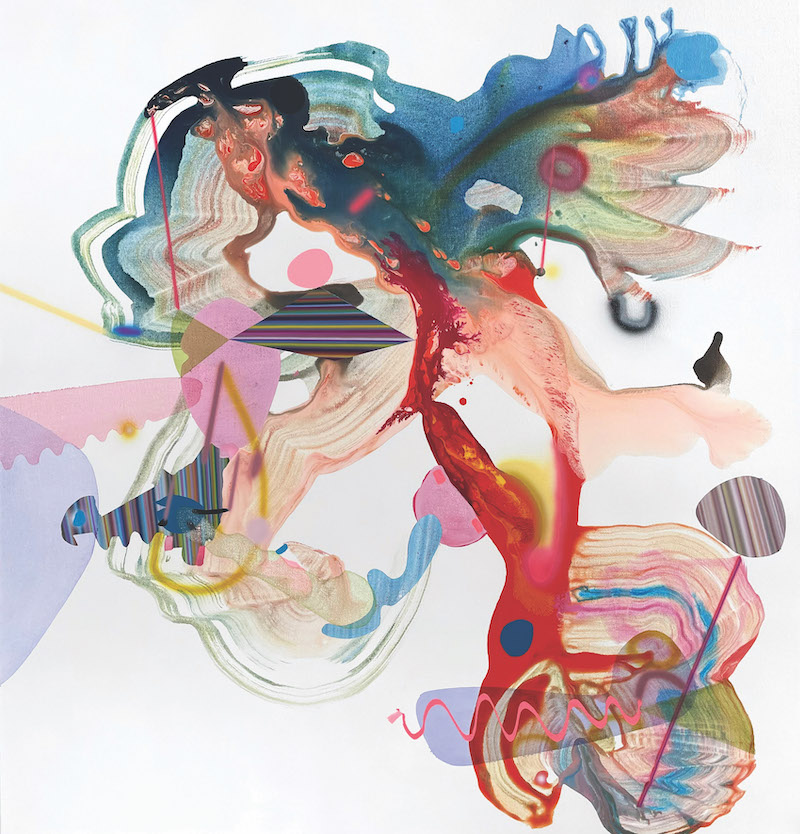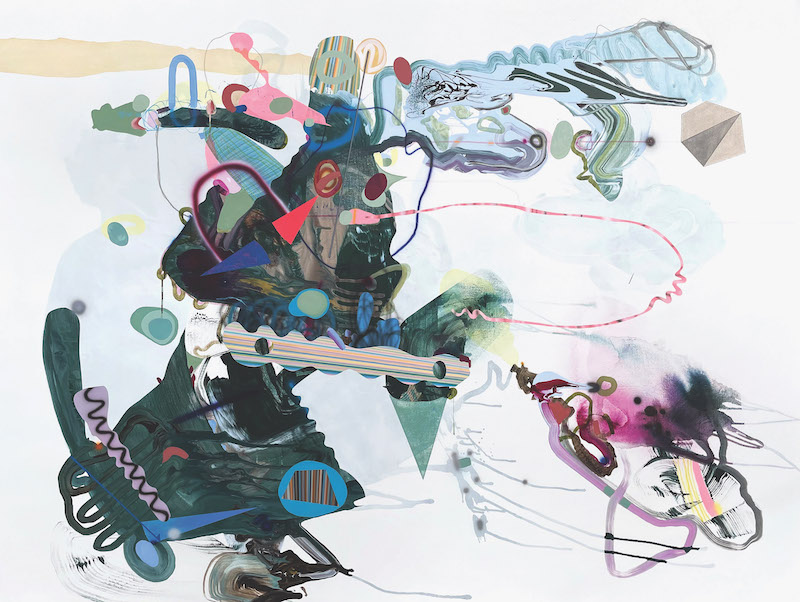To observe the work of Melbourne-based artist Michael Gromm is to witness an ongoing, almost scientific experiment with the potentiality of paint. Existing in the elastic space between figuration and abstraction, Gromm’s paintings appear as collages of line and form. The artist’s preference for sharp transitions between colour, line and negative space can feel almost digital at times.
However, Gromm’s practice exists firmly in the physical world, the artist espousing the mercurial nature of his medium: “[In paint] there is no undo button. You can only problem solve by moving forward.”
This partiality towards the element of chance extends to his studio. The artist does not set plans or schedules, choosing instead to see where the works take him. “I arrive and start at what first grabs my attention or clean up whatever mess I left behind.” This is perhaps at least partly due to his introduction to art, which began at an early age as inspired by his father, whom Gromm describes as “an artist-tinkerer type”.
Growing up in an old weatherboard house in regional Victoria that his father was constantly improving with new walls and large landscape murals, the artist describes the experience as “living in a constant state of flux and creativity”. This continual encounter with change and ever varying inspiration has perhaps predisposed the artist toward letting creativity find him, and allowing space within his practice for serendipity.
Gromm’s approach to his materials is intensely experimental. While he prefers acrylic paints, he is constantly exploring new methods of application and trailing a myriad of surfaces. How a surface holds paint is highly variable, with different textures and weaves conveying distinct aesthetic qualities. For example, he finds that heavy weave linen gives an almost pixellated effect, and that taking an orbital sander – a new addition to his repertoire – to his surface is particularly pleasing.
The artist is also unafraid of pushing his tools to their limits, stating that his paintbrushes can take quite a beating over the course of their lives. “The decay of a brush as a result of misuse does lead to it taking on a different form or shape, which makes for interesting marks,” says Gromm. “I have a favourite brush – it looks like a hedgehog.”
Gromm certainly keeps his paintbrushes busy, having been a finalist in the Geelong Contemporary Art Prize, the Eutick Memorial Still Life Award, and the Metro Art Prize.
The artist had a particularly successful year in 2023, with two solo shows in Hobart and Melbourne, and is looking forward to another: his first Sydney show with Wagner Contemporary in 2024.
Sharp curves bisect amorphous forms, and winding lines create unfamiliar landscapes within Gromm’s work. Strong colours rub up against passages of pattern and texture as the artist follows his intuition across the surface of his canvas, and rough brushwork fades suddenly into white negative space as the acrylics are guided by a steady hand. Gromm’s practice is an exercise in boldness and spontaneity, the artist completely open to the whims of his medium and the potency of total aesthetic freedom.
Above: Artist Michael Gromm. Photo: Eric Sawaya. Courtesy: the artist and Wagner Contemporary, Sydney.

Michael Gromm, Coloured Hair and Fake Instruments, 2023. Acrylic on linen, 92 x 86cm. Courtesy: the artist and Wagner Contemporary, Sydney


Michael Gromm, It Takes Nineteen Minutes, 2023. Acrylic on linen, 92 x 86cm. Courtesy: the artist and Wagner Contemporary, Sydney.

